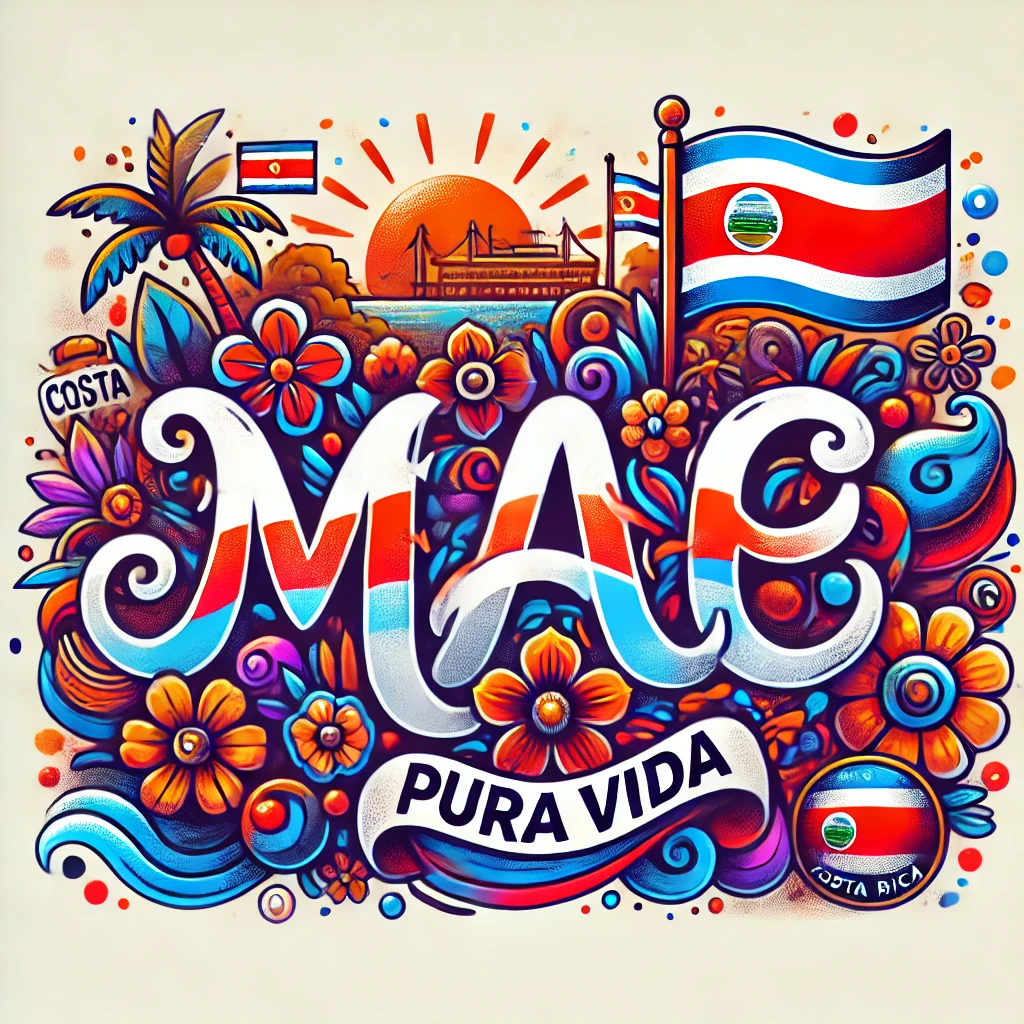Costa Rica is a country rich in culture, traditions, and expressions that make it stand out. Among these, one word stands out as particularly Costa Rican: “mae”. If you’ve visited Costa Rica or interacted with Costa Ricans (commonly referred to as Ticos), you’ve probably heard this word countless times. But what does it mean, where does it come from, and why is it so significant in Tico culture? Let’s dive into the fascinating world of this uniquely Costa Rican expression.
What Does “Mae” Mean?
The word “mae” is a versatile term used in Costa Rican Spanish, often meaning “dude,” “bro,” or even “man.” It is primarily used in informal contexts and serves as a way for Ticos to address friends, acquaintances, or even strangers in a casual and friendly manner. For example:
“Mae, let’s go to the beach!” (Dude, let’s go to the beach!)
“What’s up, mae?” (What’s up, bro?)
However, the word can also carry other meanings depending on the context, tone, and relationship between the speakers. Sometimes, it can even imply a hint of sarcasm or playfulness.
The Origins of “Mae”
The true origins of “mae” are somewhat debated, and there are several popular theories about how this word became so integral to Costa Rican culture. Here are some of the most prominent explanations:
1. The Shoemaker’s Apprentice Theory
One of the most popular theories traces the word back to the 1940s in San José, Costa Rica’s capital. According to the story, apprentices in a shoemaker’s workshop were often the target of a practical joke. The experienced shoemakers would give the apprentices a piece of rubber to hammer, claiming it was leather. The rubber, of course, would never flatten, and the apprentices would waste hours trying to shape it. These apprentices were then labeled as “majes” (fools or gullible people). Over time, “maje” evolved into the shorter, friendlier “mae” that we know today.
2. The Mexican Influence
Another theory suggests that “mae” originated from Mexican cinema and music in the mid-20th century. During this time, Costa Rica was heavily influenced by Mexican culture, especially through ranchera music and movies. The term “maje,” used in Mexico to describe someone gullible or naive, may have made its way into Costa Rican slang and transformed into “mae.”
3. The Banana Plantation Connection
A less likely but intriguing theory connects the term to the interaction between Costa Rican workers and American banana plantation exporters in the 1970s. The English word “man” may have been mispronounced as “mae”, and it gradually evolved into its current usage. However, this theory lacks strong evidence and is considered less probable by many linguists.
Cultural Significance of “Mae”
In Costa Rica, “mae” has transcended its original meanings to become a key part of the national identity. It represents the casual, friendly, and easy-going nature of Costa Ricans. For Ticos, calling someone “mae” is almost second nature, reflecting camaraderie and connection.
Interestingly, the use of “mae” also highlights the Costa Rican tradition of “choteo”—a cultural tendency to tease or joke around with others. Historically, “mae” may have been used to poke fun at someone’s naivety or mistakes. Today, however, it is primarily used in good humor or simply as a conversational filler.
Is “Mae” Always Positive?
While “mae” is generally used affectionately, its origins as a term for “fool” or “gullible person” are worth noting. In certain contexts, the word can still carry a slightly negative connotation, depending on the speaker’s tone or intent. For example, saying “Qué mae más tonto” (What a dumb guy) might come across as derogatory.
That said, the majority of Ticos use “mae” in a positive, playful, or neutral way. It’s not uncommon to hear entire conversations where almost every sentence includes “mae,” serving as a placeholder or a way to emphasize friendliness.

How to Use “Mae” as a Foreigner
If you’re a visitor to Costa Rica, using “mae” can be a fun way to immerse yourself in the local culture and connect with Ticos. However, keep these tips in mind:
- Use It Casually: “Mae” is an informal word, so avoid using it in professional or formal settings.
- Listen First: Pay attention to how locals use the term in different contexts to understand its nuances.
- Practice Friendly Tone: When in doubt, use “mae” in a friendly tone to avoid misunderstandings.
For instance, you might say:
“Pura vida, mae.” (Everything’s great, bro.)
“Gracias, mae!” (Thanks, dude!)
“Mae” as a Reflection of Costa Rican Identity
The story of “mae” goes beyond language—it reflects key aspects of Costa Rican culture. From its roots in practical jokes and humor to its widespread use in everyday conversations, “mae” symbolizes the lighthearted and sociable nature of Ticos. It also reminds us of Costa Rica’s unique ability to take influences from history and turn them into something distinctly local.
Whether you’re walking through the bustling streets of San José, relaxing on the beaches of Guanacaste, or exploring the cloud forests of Monteverde, you’ll hear “mae” echoing everywhere—a true testament to its enduring place in Costa Rican life.
Conclusion
“Mae” is much more than just a word. It’s a cultural artifact, a linguistic marker, and a bridge that connects people in Costa Rica. Understanding its meaning and origins gives you a deeper appreciation for the Tico way of life. So, next time you’re in Costa Rica, don’t be shy—try using “mae” yourself. You might just find it opens doors to new friendships and experiences.


